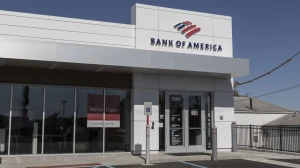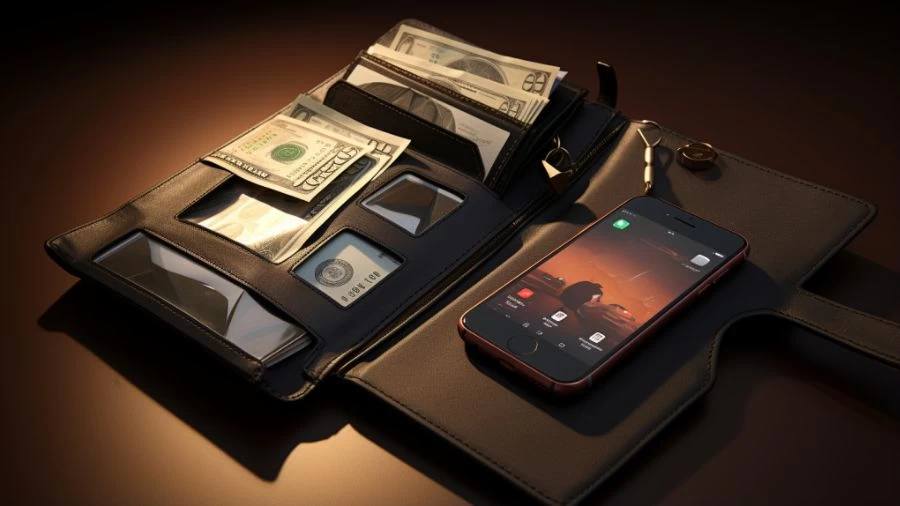
What Is a Digital Wallet? How Does Digital Wallet Work?
A digital wallet, also called an e-wallet, securely stores payment information and passwords in the cloud, accessible on mobile devices, simplifying electronic payments with various added cards while ensuring compatibility, security, and merchant acceptance.
by Sangamithra
Published Sep 06, 2023 | Updated Sep 06, 2023 | 📖 11 min read
On This Page
- What is a Digital Wallet?
- How Does Digital Wallet Work?
- How to Use a Digital Wallet?
- Digital Wallet Login
- How to Use Digital Wallet at ATM?
- What Are the Different Types of Digital Wallets?
- What Are the Advantages and Disadvantages of Using Digital Wallets?
- Is It Secure to Use Digital Wallets for Transactions?
- How to Select the Right Digital Wallet?
What is a Digital Wallet?
A digital wallet, also known as an electronic wallet, is a financial transaction application that securely stores payment information and passwords in the cloud, accessible on connected devices, primarily mobile phones and tablets. These wallets enable users to enter and store credit card, debit card, or bank account details, allowing for convenient and secure electronic payments while eliminating the need to carry physical cards.
Digital wallets may also store various other items like gift cards, loyalty cards, and even identification documents, enhancing their versatility and convenience in modern financial transactions.
How Does Digital Wallet Work?
A digital wallet, also known as an electronic wallet, is a financial application that operates on various connected devices, such as smartphones and tablets. It securely stores payment information and passwords in the cloud, offering convenience and security to users. Here's how a digital wallet works:
Storage of Financial Information: Users can input and store their credit card, debit card, or bank account information within the digital wallet application.
Wireless Communication: Digital wallets utilize a device's wireless capabilities, including Bluetooth, WiFi, and magnetic signals, to transmit payment data securely. This information is transmitted from the user's device to a point-of-sale terminal or another recipient designed to read and process the data.
Technologies Used: The primary technologies employed by digital wallets include:
- QR Codes: Quick response codes that store information and can be scanned by the device's camera for initiating payments.
- Near Field Communication (NFC): This technology allows two smart devices to connect and transfer information using electromagnetic signals, requiring close proximity.
- Magnetic Secure Transmission (MST): A technology akin to traditional magnetic card readers, generating an encrypted field for the point of sale to read.
Transaction Routing: The payment information stored in the digital wallet is transmitted to the point-of-sale terminal, which is connected to payment processors. The payment then follows the standard credit card network and banking channels to complete the transaction.
Cryptocurrency Integration: Some digital wallets, like Apple Pay and Google Pay, offer integration with cryptocurrency payment options. Users can add cryptocurrency debit cards to their digital wallets, which convert cryptocurrency to dollars at current market values for purchases.
How to Use a Digital Wallet?
A digital wallet is a secure and convenient way to make payments using your mobile device. With options like Apple Pay and Google Pay, you can link your cards, use authentication methods, and make purchases online or in-person with ease. Here is how to use a digital wallet for hassle-free transactions:
Choose a Digital Wallet: Select a digital wallet from popular options like Apple Pay, Google Pay, or others that suit your device and preferences.
Set Up the Digital Wallet: Download the chosen wallet app from your device's app store. Install and open it.
Add Payment Methods: Link your credit or debit card information to the digital wallet app. Some wallets also support bank account connections.
Security Measures: Activate security features like facial recognition, fingerprint ID, or a PIN code to secure your wallet.
Online Purchases:
- When making online purchases, choose the digital wallet as your payment method during checkout.
- Authenticate using your security method (e.g., fingerprint or face scan).
In-Person Purchases:
- Ensure the business or store accepts digital wallet payments.
- Open your digital wallet app.
- Select the card or payment method you want to use.
- Hold your device close to the payment terminal with NFC or other compatible technology.
Review Transactions: Keep track of your payment history and transactions within the digital wallet app.
Additional Features: Some digital wallets offer additional functions like storing gift cards, event tickets, or loyalty cards digitally.
Safety: Digital wallets are secure due to tokenization, but always use security measures provided by your wallet app.
Enjoy Convenience: Enjoy the convenience of quick and secure payments without the need to carry physical cards or cash.
Digital Wallet Login
A Digital Wallet Login serves as a convenient means for individuals to access their digital wallets and manage their financial transactions securely. Here are the steps to consider to log into their Digital Wallet:
Access through Smartphone: When accessing their Digital Wallet, individuals should open the wallet app on their smartphone. Most smartphones come pre-equipped with wallet applications to streamline the process.
Entering Card Information: Upon entering the app, users have the option to input their credit or debit card details. This step allows for the storage of multiple cards and the establishment of a default payment method for ease of use.
Banking App Integration: Customers can log into their Digital Wallet via the bank's app, simplifying the login procedure and enhancing the overall user experience.
Payment Process: Once the Digital Wallet is set up, making payments becomes straightforward. Online shopping typically involves a one- or two-click payment process. In physical stores, users can make payments by simply using their phones at contactless payment terminals.
App Integration: Many applications, such as those designed for food delivery or ride-sharing, offer the convenience of using the Digital Wallet as a payment method, eliminating the need to repeatedly input payment information.
Security Measures: Digital Wallets prioritize security. Account information is not stored on the user's device; instead, a virtual card number is used for transactions, safeguarding the user's actual card details.
Authentication Methods: Depending on the device, users can authorize payments using fingerprint recognition, passcodes, or facial recognition, providing an additional layer of security.
How to Use Digital Wallet at ATM?
Using a digital wallet at an ATM offers individuals a convenient and touchless way to access cash and conduct transactions. Major banks, such as Chase, Bank of America, PNC, and Wells Fargo, have embraced this technology, providing customers with a cardless ATM experience. Here's a quick guide on how one can use a digital wallet at an ATM.
Setting Up the Digital Wallet:
Before individuals can use their digital wallet at an ATM, they need to ensure it's properly set up. Most banks support popular digital wallets like Apple Pay, Google Pay, and Samsung Pay. They should download the respective app and link it to their bank account or credit card.
Locating a Supported ATM:
Individuals should identify ATMs from their bank or network that offer cardless access. Major banks have rolled out this feature at select ATMs in various cities. They should ensure their chosen ATM is equipped with NFC (Near-Field Communication) capabilities for contactless payments.
Initiating the Transaction:
When approaching the cardless ATM, users should select the option for digital wallet payments. Depending on their bank, they may need to tap their smartphone on a designated spot on the ATM or scan a QR code displayed on the screen. Authentication of the transaction can be done using methods like fingerprint recognition, passcode, or facial recognition, as required.
By following these simple steps, individuals can securely and conveniently use their digital wallet at supported ATMs, saving them time and offering a touchless banking experience.
What Are the Different Types of Digital Wallets?
Digital wallets come in various types, each serving specific purposes. Understanding these different types can help individuals and businesses choose the one that best suits their needs. Here are the primary types of digital wallets:
Closed Wallets: Closed wallets are developed by companies to facilitate transactions within their ecosystem. Users of closed wallets can make payments exclusively with the issuer of the wallet. Funds from cancellations, returns, or refunds are typically stored within the wallet. For instance, Amazon Pay is an example of a closed wallet.
Semi-closed Wallets: Semi-closed wallets allow users to make transactions at specified merchants and locations. While their usage is restricted to a specific network of businesses, both online and offline purchases can be made using these wallets. Merchants often need to enter agreements or contracts with wallet issuers to accept payments from these mobile wallets.
Open Wallets: Open wallets are issued by banks or institutions in partnership with banks. Users with open wallets have a broader range of transactions available to them compared to semi-closed wallets. They can use these wallets for various transactions, including withdrawals from banks and ATMs and fund transfers.
What Are the Advantages and Disadvantages of Using Digital Wallets?
Digital wallets have become increasingly popular as a convenient way to handle financial transactions. However, like any technology, they come with their own set of advantages and disadvantages.Â
Advantages of Using Digital Wallets:
- Digital wallets offer a secure means of storing and transmitting payment information. They often use encryption and authentication methods to protect your data.
- You no longer need to carry physical credit or debit cards. Your payment information is stored in the cloud, making payments quick and hassle-free.
- Digital wallets can provide access to financial services for those in underserved areas, as they don't require a physical bank branch.
- With digital wallets, you can pay for purchases swiftly using your smartphone, reducing the need for cash and cards.
Disadvantages of Using Digital Wallets:
- Not all businesses or locations accept digital wallet payments, especially in less-developed areas, limiting their usefulness.
- Digital wallets rely on technology like Bluetooth, WiFi, and NFC, which may not always be available or functional.
- If your mobile device is lost, stolen, or hacked, the information stored in your digital wallet could be vulnerable to identity theft or fraud.
Is It Secure to Use Digital Wallets for Transactions?
Yes, it is secure to use digital wallets for transactions. Digital wallets employ advanced security measures, such as tokenization, which replaces sensitive card information with one-time-use tokens during transactions, ensuring that your personal data remains confidential.
Additionally, many digital wallets require PINs or biometric authentication for access, adding an extra layer of protection. However, users should still exercise caution, especially when entering passcodes in public places, to maintain the security of their digital wallet transactions.
How to Select the Right Digital Wallet?
In an era of digital advancements, the utilization of digital wallets has become increasingly prevalent among consumers for their convenience and security. However, choosing the right digital wallet tailored to individual needs can be a nuanced decision. Here’s a guide on how to select the ideal digital wallet:
1. Consider Compatibility: The first step in choosing a digital wallet is assessing compatibility. Different digital wallets are designed for specific smartphone platforms. For example, Apple Pay is exclusively available on Apple devices, while Samsung Pay supports both MST and NFC technologies. On the other hand, PayPal stands out as it can be accessed on both Apple and Android platforms, offering a more flexible choice.
2. Merchant Acceptance: One crucial factor to consider is merchant acceptance. While digital wallets offer convenient payment options, not all businesses accept them. Therefore, it's prudent to retain a physical credit or debit card as a backup payment method in case the chosen digital wallet is not supported by a particular merchant.
3. Security Features: Security is paramount in digital transactions. Digital wallets incorporate a robust security feature called "tokenization." This ensures that sensitive credit or debit card information remains confidential during transactions. Instead of sharing the actual card number, a one-time-use token is generated for each purchase. Additionally, accessing a digital wallet often necessitates additional layers of security, such as a PIN or biometric authentication, such as fingerprint or facial recognition.
4. Usage Scope: Consider the range of functions offered by a digital wallet. While most digital wallets store credit and debit cards, some can also house gift cards, loyalty cards, coupons, event tickets, plane tickets, and even facilitate money transfers to other individuals. Ensure the chosen digital wallet aligns with your intended use and lifestyle.
5. Closed vs. Open Digital Wallets: It's important to distinguish between "closed" and "open" digital wallets. Closed wallets, like the Starbucks app, are designed for use exclusively at specific stores, limiting their utility. Conversely, open digital wallets, such as Apple Pay and Google Pay, can be used at any merchant that accepts them, providing greater versatility.
6. Exercise Caution: Regardless of the chosen digital wallet, users should exercise caution when using them in public places. To safeguard personal information and financial security, individuals should maintain vigilance while entering passcodes or sensitive data.
What Is Digital Wallet - FAQS
1. Are digital wallets safe to use for transactions?
Yes, digital wallets are secure, employing tokenization and authentication methods for data protection.
2. Can I use a digital wallet everywhere?
Not all businesses accept digital wallets; it's wise to have a physical card as a backup payment method.
3. What types of cards can I store in a digital wallet?
Most digital wallets store credit and debit cards, along with gift cards, loyalty cards, and more.
4. Is my data safe if I lose my mobile device with a digital wallet?
Digital wallets have security measures; however, it's essential to report a lost device promptly and change access codes.
5. Are digital wallets available on all smartphone platforms?
Digital wallets vary by platform; some are exclusive to specific brands, while others, like PayPal, are more versatile.




